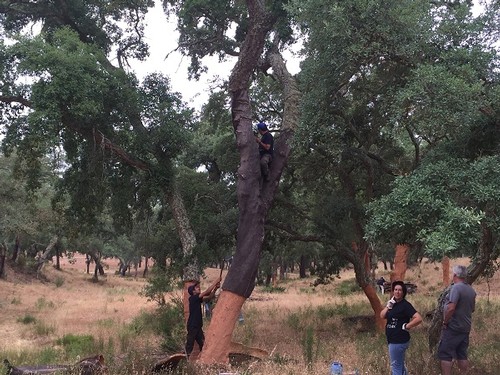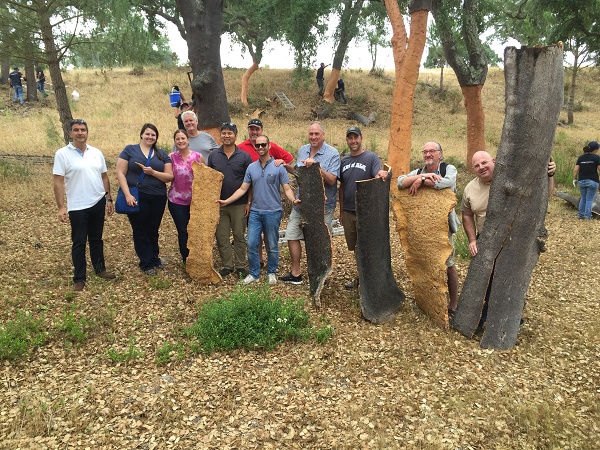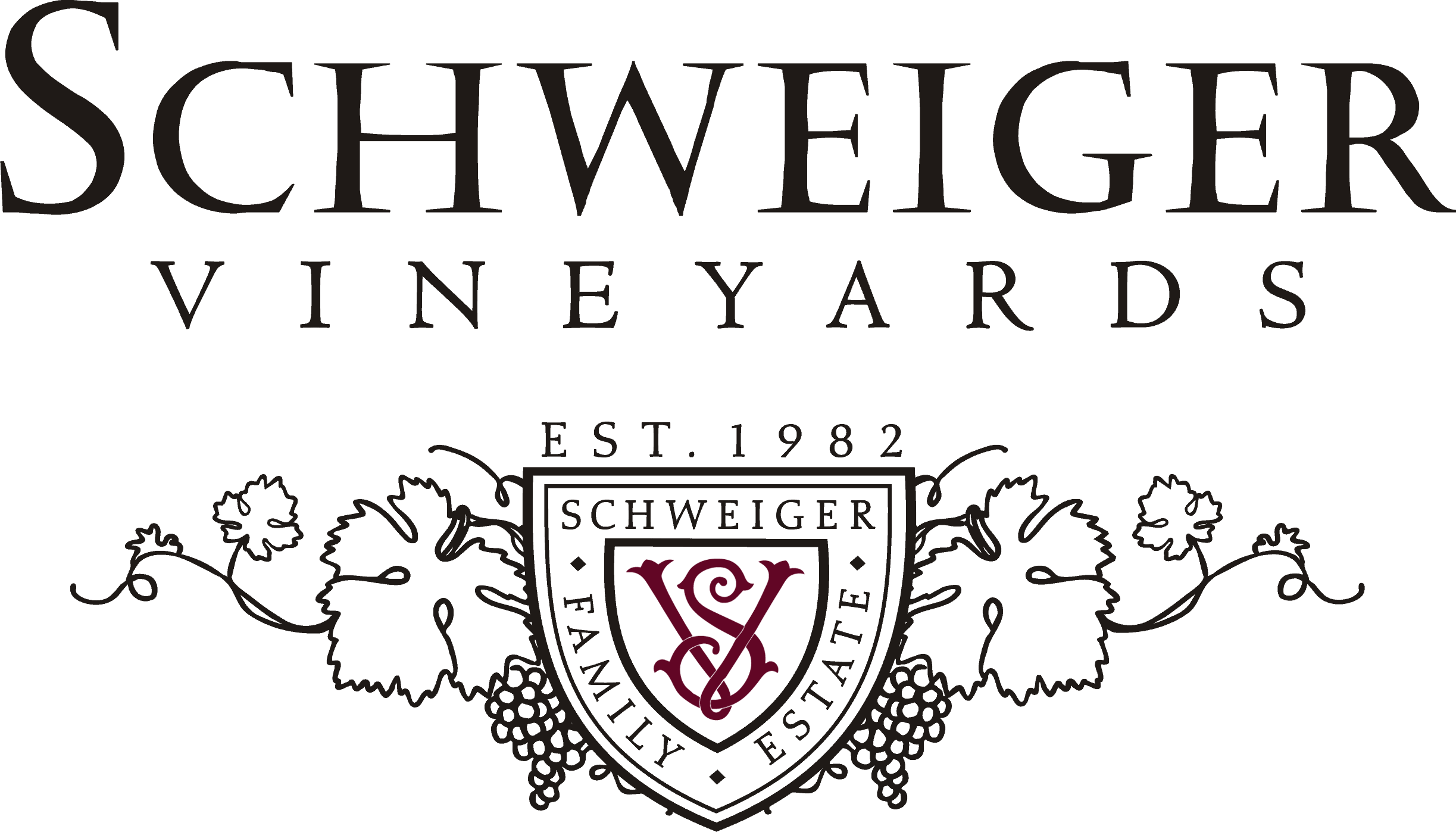The Portugal Cork Harvest - Part 4 in Winemaker Andy Schweigers' Portugal journey.
Normally when you see a group of axe-wielding men enter a forest, you expect to see trees falling shortly thereafter. The cork harvest proves an exception to that rule.

On a wonderfully cool and overcast June morning, we rode in our bus as deep into the forests of southern Portugal as possible. Once the roads became too rough, we jumped into the back of pickups and drove in even further. I should point out that these forests are very different than what we are used to in North America. The soil is very loose and sandy. The area receives very little rainfall, so what weeds are in the area are very short and have turned brown by June. I was informed that all the forests are owned by different families, passed down over the generations. Even though they are privately owned, the government has passed certain restrictions on these trees.
While Portugal is by far, the world’s largest producer of cork, it is also harvested in France, Spain, Italy, Morocco, and even Sardinia.
 It takes a cork tree 25 years to grow before the bark can be stripped for the first time. This first harvest is not useful for cork stoppers, so it primarily goes into flooring or other cork products. After that harvest, the tree must be left alone for a minimum of 9 years before it can be harvested again. There is no mechanical stripping allowed. Rather, a highly specialized axe called a “machada” is used to slit the outer bark just far enough, leaving the inner bark behind. The men wielding these axes are highly trained and their skill is often passed down through the generations. Swing too hard and you risk damaging the inner layer of bark, potentially killing the tree. Swing too lightly and the slabs harvested are jagged, resulting in more waste. Each swing is precisely aimed. Once the axe is in, it’s given a small twist yielding a beautiful “squeak” sound of healthy cork. After creating uniform vertical cuts, the harvester works their way around the tree horizontally. They then use their axe to gently peel the bark away from the tree.
It takes a cork tree 25 years to grow before the bark can be stripped for the first time. This first harvest is not useful for cork stoppers, so it primarily goes into flooring or other cork products. After that harvest, the tree must be left alone for a minimum of 9 years before it can be harvested again. There is no mechanical stripping allowed. Rather, a highly specialized axe called a “machada” is used to slit the outer bark just far enough, leaving the inner bark behind. The men wielding these axes are highly trained and their skill is often passed down through the generations. Swing too hard and you risk damaging the inner layer of bark, potentially killing the tree. Swing too lightly and the slabs harvested are jagged, resulting in more waste. Each swing is precisely aimed. Once the axe is in, it’s given a small twist yielding a beautiful “squeak” sound of healthy cork. After creating uniform vertical cuts, the harvester works their way around the tree horizontally. They then use their axe to gently peel the bark away from the tree.
The harvesters start at the ground, working their way up, harvesting slabs approximately 5’ tall by about 2’ across, but this varies depending on the diameter of the tree. They will continue working up the tree, typically stopping well below the branch line. I did notice that some more mature trees with larger, trunk-like branches getting harvested but was told that the cork from these branches usually gets sorted out and gets ground down for other products. 
The forest we visited was one of several that are contracted directly to M.A. Silva. Silva works closely with the family managing the forest to maintain a zero herbicide/pesticide program. They also work with the family on a replant program to ensure that there will be plenty of trees to be harvested in the future. These new trees require minimal irrigation and after the first few seasons, are completely dry farmed. M.A. Silva has their own crew of harvesters come in and conduct the harvest. These harvesters enjoy the security of being employed year round by Silva, performing other functions within the company in the off season. All cork harvested is picked up that same day and driven about an hour to “M.A. Silva 3”, a storage and processing facility for the next step.
These steps really are the beginning of the huge difference M.A. Silva offers me as a customer as opposed to most other cork suppliers. Most cork suppliers are purchasing finished cork from small companies who share crop portions of the forest. They lack the authority to prevent herbicide or pesticide use and do not have the capital to have the acres of concrete required to properly allow the cork to further process. Once the cork comes in for boiling and punching, there is no way to verify which section of which forest the material came from. This traceability becomes much more important down the road of the cork. Speaking of which…after about an hour in the forest, it was time to get back on the bus and head down the road…to the resting and processing facility.
To Be Continued…

